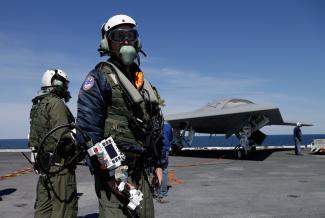Fragile states
New spaces of violence in ungoverned places

Conrad Schetter and Benedikt Korf are the editors of “Geographien der Gewalt” (geographies of violence). Schetter is the director of the Bonn International Center for Conversion (BICC), and Korf teaches at the University of Zürich. In the eyes of the editors, two different notions of violence currently dominate academic debate. The first is “sheer madness” driven by “collective intoxication”, and the second is “a reasonable kind of madness”.
Schetter and Korf opt for the second definition. They point out that war lords tend to benefit from violence, which enables them to sell natural resources, confiscate relief goods or engage in blackmail, for example. In this view, violence results from sober ideas of self-interest rather than some kind of intoxication, and that helps to explain why conflicts last rather long and why it is so difficult to involve parties to a conflict in peace processes. The book assesses complex settings, but, for obvious reasons, does not offer any simple solutions.
According to Schetter and Korf, western powers have begun to legitimise interventions in foreign countries, especially since 9/11/2001. Basically, they argue that some places on earth are now threatening western societies. This narrative is used to explain the use of military force, including air strikes and drone attacks in countries like Iraq or Afghanistan.
The title of Derek Gregory’s contribution to the book is “omnipresent war”. The term refers to apparently never ending tensions, for instance the US-led “war on terror” or conflicts along the US-Mexican border. In Gregory’s eyes, related violence marks spaces with blurred outlines no one can well define.
US security forces have been trying to control drug trafficking and illegal migration along the Mexican border for many years. Gregory writes that the USA are increasingly militarising matters. The US Customs and Border Protection is cooperating with the military to establish high-tech border control systems, and drone surveillance of Mexico started in 2011.
As co-authors, Schetter and Janosch Prinz discuss the fact that some nations are technologically dominant, so they can enforce their ideas of order internationally, thus creating new “spaces of violence”. Typically, such action is justified by pointing out that ungoverned areas cause danger to the dominant nations because those areas serve as safe havens for terrorists or mafia networks. Examples mentioned include US drone strikes in Pakistan, Yemen and Somalia.
According to the authors, warfare is asymmetric in the areas concerned. Conflict parties differ dramatically in terms of arms technology and organisation. Insurgent attacks in Iraq are nearly unpredictable and unmanageable, and the response is massive air strikes that affect all people in the area. The people are not warned, and they have no protection, Prinz and Schetter argue. Moreover, the monopoly on the legitimate use of force, which typically marks statehood, no longer exists.
The contribution of geographer Frank Zirkl deals with violence in Brazil’s cities, where the illegal drug trafficking triggers gang wars, as well as clashes of the police and illegal militias in marginalised areas called “favelas”. Residents live in a constant state of alert. To “reconquer” such neighbourhoods, Zirkl warns, the use of force will not be enough, as governance must improve in general. People must be involved in public decision-making to improve urban affairs and stem drug trafficking.
Sabine Balk
Reference:
Korf, B. and Schetter, C., 2015: Geografien der Gewalt. (Geographies of violence – only in German). Borntraeger Stuttgart.








